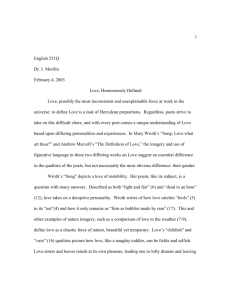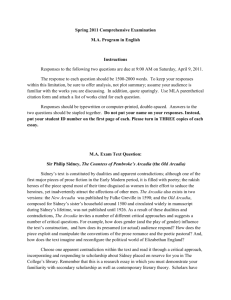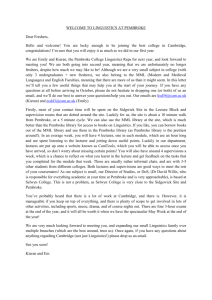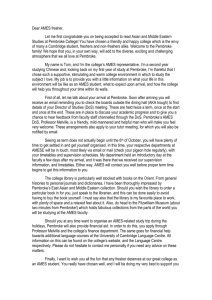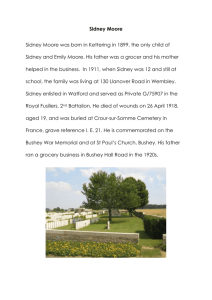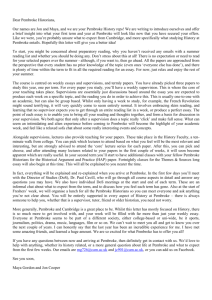Mary Wroth and Urania - Nancy K. Kerns, Instructor of English
advertisement
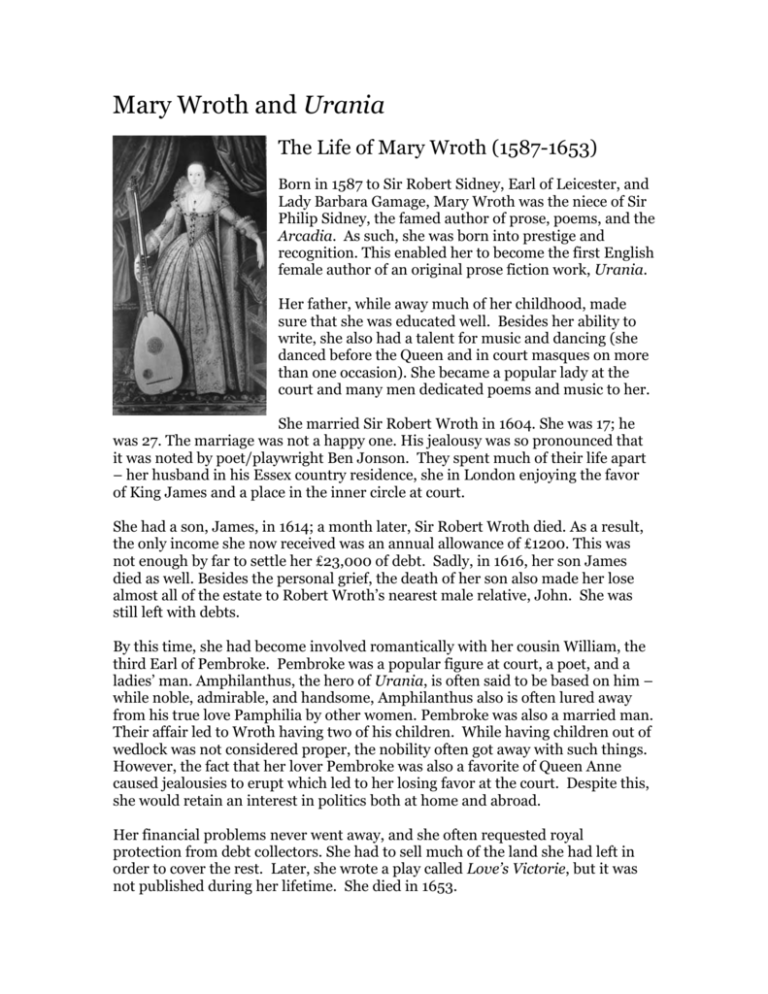
Mary Wroth and Urania The Life of Mary Wroth (1587-1653) Born in 1587 to Sir Robert Sidney, Earl of Leicester, and Lady Barbara Gamage, Mary Wroth was the niece of Sir Philip Sidney, the famed author of prose, poems, and the Arcadia. As such, she was born into prestige and recognition. This enabled her to become the first English female author of an original prose fiction work, Urania. Her father, while away much of her childhood, made sure that she was educated well. Besides her ability to write, she also had a talent for music and dancing (she danced before the Queen and in court masques on more than one occasion). She became a popular lady at the court and many men dedicated poems and music to her. She married Sir Robert Wroth in 1604. She was 17; he was 27. The marriage was not a happy one. His jealousy was so pronounced that it was noted by poet/playwright Ben Jonson. They spent much of their life apart – her husband in his Essex country residence, she in London enjoying the favor of King James and a place in the inner circle at court. She had a son, James, in 1614; a month later, Sir Robert Wroth died. As a result, the only income she now received was an annual allowance of ₤1200. This was not enough by far to settle her ₤23,000 of debt. Sadly, in 1616, her son James died as well. Besides the personal grief, the death of her son also made her lose almost all of the estate to Robert Wroth’s nearest male relative, John. She was still left with debts. By this time, she had become involved romantically with her cousin William, the third Earl of Pembroke. Pembroke was a popular figure at court, a poet, and a ladies’ man. Amphilanthus, the hero of Urania, is often said to be based on him – while noble, admirable, and handsome, Amphilanthus also is often lured away from his true love Pamphilia by other women. Pembroke was also a married man. Their affair led to Wroth having two of his children. While having children out of wedlock was not considered proper, the nobility often got away with such things. However, the fact that her lover Pembroke was also a favorite of Queen Anne caused jealousies to erupt which led to her losing favor at the court. Despite this, she would retain an interest in politics both at home and abroad. Her financial problems never went away, and she often requested royal protection from debt collectors. She had to sell much of the land she had left in order to cover the rest. Later, she wrote a play called Love’s Victorie, but it was not published during her lifetime. She died in 1653. Urania As a member of the literary Sidney family, it is not surprising that Wroth developed an interest in writing. In addition to her famous uncle, her aunt the Countess of Pembroke was actively involved in editing and helping to complete the manuscripts of her brother as well as other projects such as translation. The character of Urania is very loosely based on one who appears in Philip Sidney’s Arcadia – a shepherdess with class. Wroth makes her a princess. Other than that, Wroth’s work deviates almost entirely from the Arcadia. In fact, Urania is not even the main heroine of the book; instead, the heroine is a princess named Pamphilia, Wroth’s own invention. The work is massive and has a myriad of characters. It is in two parts which together consist of about 600,000 words. The prose work also includes a sonnet series, Pamphilia to Amphilanthus. The sonnet sequence is especially notable because it features a woman pining for her beloved in place of the angst-ridden man usually central to those type of sonnets. The work incorporates ides of chivalry as well as personal experience with adultery, jealous queens, and political intrigues. While a romance, it also includes elements of the pastoral genre. The first part was published in 1621 and caused quite a stir at court. Many people at court saw themselves in the characters, and they did not necessarily like what they saw. One of these, Edward Denny, Baron of Waltham, got so angry that he wrote a nasty poem calling her a “hermaphrodite in show, in deed a monster” as well as angry letters about how she had insulted him and his family. While she wrote scoffing replies, she did make it known that it was not her fault that the work was published, and that she had never intended it to be widely read by the public. All of the controversy about her work caused her to withdraw from the court, however. In spite of all the drama surrounding its publication, Urania remains a landmark work in women’s writing.
